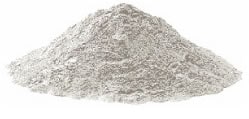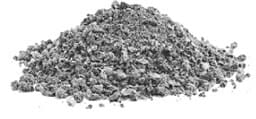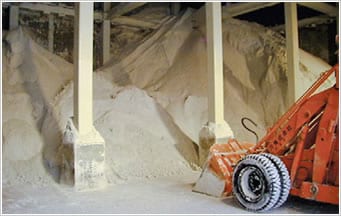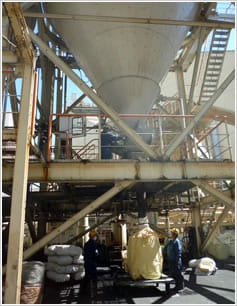Environmental Initiatives
 Using Coal Ash Effectively
Using Coal Ash Effectively
Coal-fired thermal power stations mainly use coal as a fuel, but they produce a large quantity of coal ash following the coal combustion. We constructed the Maizuru Power Station as our only coal-fired thermal power station in Maizuru, Kyoto. By recycling this coal ash in the form of a raw material for cement and construction material, we have greatly reduced its total volume. In addition, some of the coal ash is processed into JIS-standard products for outside sale. For more information, please visit the website of Kanden Power-Tech Corp., a member of our Group.

Fly ash
Collected from the boiler flue by the electric bag filter
Coal ash (clinker ash)
Pulverized clumps of ash that have dropped into the lower part of the boiler
 Using Gypsum Effectively
Using Gypsum Effectively
Some of our thermal power stations incorporate exhaust gas desulfurizers to remove the sulfur present in combustion gases. These power stations produce gypsum as a byproduct. We sell this gypsum as a raw material for use in plaster boards or cement and continue to promote its effective use.
 Gypsum removed from the thermal power station’s exhaust gas desulfurizer.
Gypsum removed from the thermal power station’s exhaust gas desulfurizer.
 The gypsum is recycled as plaster boards (photo) and as a raw material for cement.
The gypsum is recycled as plaster boards (photo) and as a raw material for cement.
 Effectively Using Other By-products from Our Thermal power stations
Effectively Using Other By-products from Our Thermal power stations

Byproducts, such as the ash generated from combustion of heavy oil and crude oil in the operation of our power stations, are effectively processed through a diversion stream to become raw materials for other products. We contribute to the emergence of a society dedicated to recycling by achieving zero emissions of industrial waste.
* Zero emissions
A concept and technologies for using certain industrial waste products as raw materials for other industries with the aim of establishing industrial recycling systems to achieve zero waste emissions. This approach was advocated by the United Nations University in 1994.






